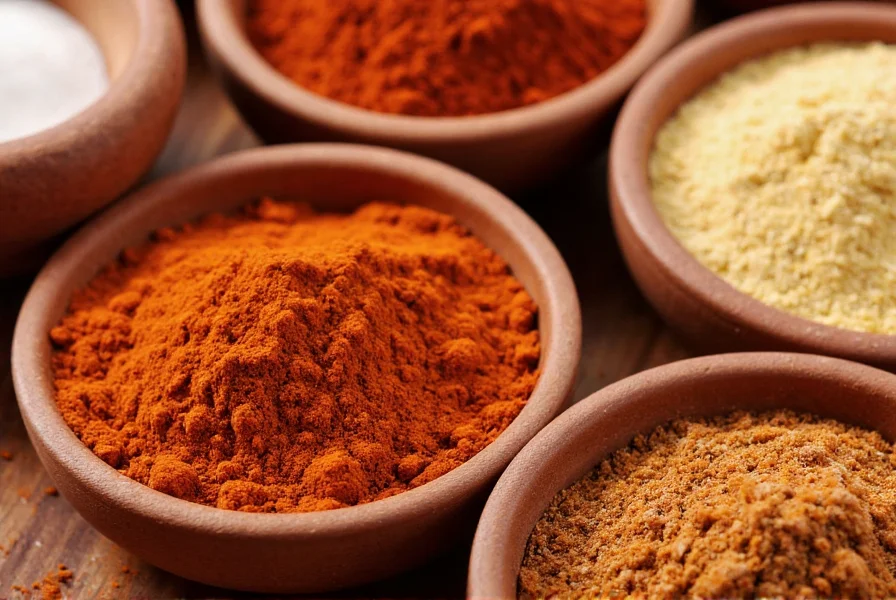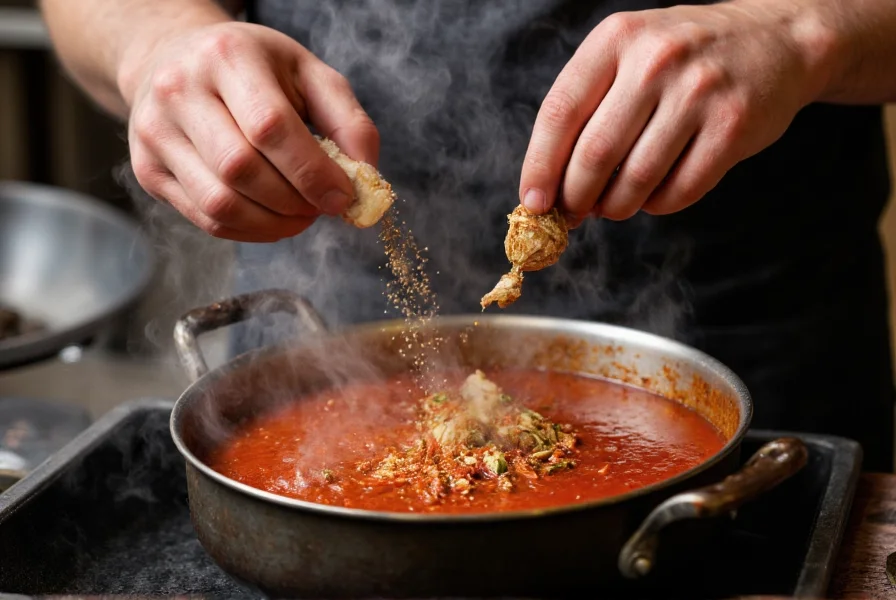Creating the perfect chili relies on understanding how different spices interact to build layers of flavor. While recipes vary by region and personal preference, certain spices form the foundation of authentic chili seasoning. This guide explores the science and tradition behind spice selection for chili, helping both novice and experienced cooks achieve restaurant-quality results at home.
Core Spices That Define Chili Flavor
Chili powder isn't a single spice but a carefully balanced blend that serves as the flavor foundation. Quality commercial blends typically contain ground chilies, cumin, garlic, oregano, and sometimes cocoa. When selecting chili powder, check the ingredient list—avoid blends with excessive fillers like flour or cornstarch.
Cumin provides that distinctive earthy depth essential to traditional chili. Its warm, slightly citrusy notes complement the heat from chilies without overpowering them. For best results, toast whole cumin seeds before grinding them fresh—this process releases essential oils that dramatically improve flavor intensity.
| Essential Spice | Flavor Profile | Recommended Amount (per lb meat) |
|---|---|---|
| Chili Powder | Earthy, moderately spicy | 2-3 tablespoons |
| Cumin | Warm, earthy, slightly citrusy | 1-2 tablespoons |
| Garlic Powder | Pungent, savory | 1 tablespoon |
| Onion Powder | Sweet, aromatic | 1 tablespoon |
| Dried Oregano | Herbaceous, slightly bitter | 1 teaspoon |
Advanced Spice Combinations for Depth
Once you've mastered the basics, consider these professional techniques for elevating your chili:
Smoked paprika adds complexity without excessive heat. Unlike regular paprika, smoked varieties provide that elusive campfire quality reminiscent of traditional pit-cooked chili. Use 1-2 teaspoons to enhance rather than dominate.
Cocoa powder might seem unusual but works wonders in chili. The natural bitterness balances acidity while enhancing meaty flavors. Use 1-2 tablespoons of unsweetened cocoa powder for richness without chocolate flavor. For an even more sophisticated approach, try adding a square of dark chocolate during the final simmering stage.
Cayenne pepper offers precise heat control. Unlike chili powder which varies in spiciness, cayenne provides consistent heat that you can adjust to taste. Start with 1/4 teaspoon and increase gradually—remember you can always add more heat but can't remove it once added.

Regional Variations in Chili Spicing
Chili traditions differ significantly across regions, each with distinctive spice profiles:
Texas-style chili emphasizes meat and chilies with minimal additional spices. Authentic Texas chili often uses only dried chilies (like ancho, guajillo, and chipotle), garlic, and salt—no beans or tomato products. The spice blend focuses on showcasing the complex flavors of carefully selected chilies.
Cincinnati-style chili features unexpected spices including cinnamon, allspice, and sometimes even chocolate. This Mediterranean-influenced version typically includes 1/4 teaspoon cinnamon and a pinch of allspice per pound of meat, creating a uniquely sweet-spicy profile served over spaghetti.
New Mexico chili relies on locally grown chilies as the primary flavor component. Traditional recipes use roasted green chilies or dried red chilies as the base, with minimal additional spices beyond garlic and oregano. The focus remains on the distinctive flavor of New Mexico's signature crop.
Timing Matters: When to Add Spices
The sequence in which you add spices significantly impacts final flavor. For optimal results:
- Add dried spices to hot oil for 30-60 seconds before adding liquids—this blooms the spices, releasing essential oils and mellowing harsh notes
- Incorporate chili powder and cumin early in the cooking process to allow flavors to meld
- Add delicate spices like oregano during the last 30 minutes of cooking to preserve their aromatic qualities
- Reserve a small amount of fresh spices to stir in at the end for bright top notes
Many home cooks make the mistake of adding all spices at once. Proper spice timing creates layered complexity rather than a flat, one-dimensional flavor profile.
Avoiding Common Spice Mistakes
Even experienced cooks sometimes undermine their chili with these preventable errors:
Using stale spices—ground spices lose potency within 6 months. Test your spices by rubbing a small amount between your fingers then smelling them. If the aroma is weak, replace them. Whole spices stay fresh significantly longer.
Over-relying on pre-made seasoning mixes—while convenient, these often contain excessive salt and fillers. Create your own blend using fresh spices for superior flavor control. A basic homemade chili seasoning mix combines 1/4 cup chili powder, 2 tablespoons cumin, 1 tablespoon garlic powder, 1 tablespoon onion powder, 2 teaspoons oregano, 1 teaspoon paprika, and 1/2 teaspoon cayenne.
Ignoring acid balance—spices need proper pH to shine. A splash of cider vinegar or squeeze of lime juice added at the end brightens flavors and makes spices more perceptible without making the dish taste sour.

Storing Spices for Maximum Freshness
Proper storage preserves spice potency:
- Keep spices in airtight containers away from heat and light
- Store whole spices rather than pre-ground whenever possible
- Buy spices in small quantities from high-turnover retailers
- Label containers with purchase dates and replace ground spices every 6 months
For frequently used spices like cumin and chili powder, consider storing small amounts in your spice rack and keeping larger reserves in the freezer. Cold temperatures significantly extend shelf life while maintaining volatile flavor compounds.
Creating Your Signature Blend
The beauty of chili lies in its adaptability to personal taste. Start with the foundational ratios, then experiment systematically:
- Prepare two identical batches of chili
- Vary one spice element between them (e.g., smoked vs. regular paprika)
- Compare results to understand each spice's contribution
- Adjust your personal blend accordingly
Remember that chili often tastes better the next day as flavors continue to meld. Always taste and adjust seasoning before serving, as flavors concentrate during storage.










 浙公网安备
33010002000092号
浙公网安备
33010002000092号 浙B2-20120091-4
浙B2-20120091-4